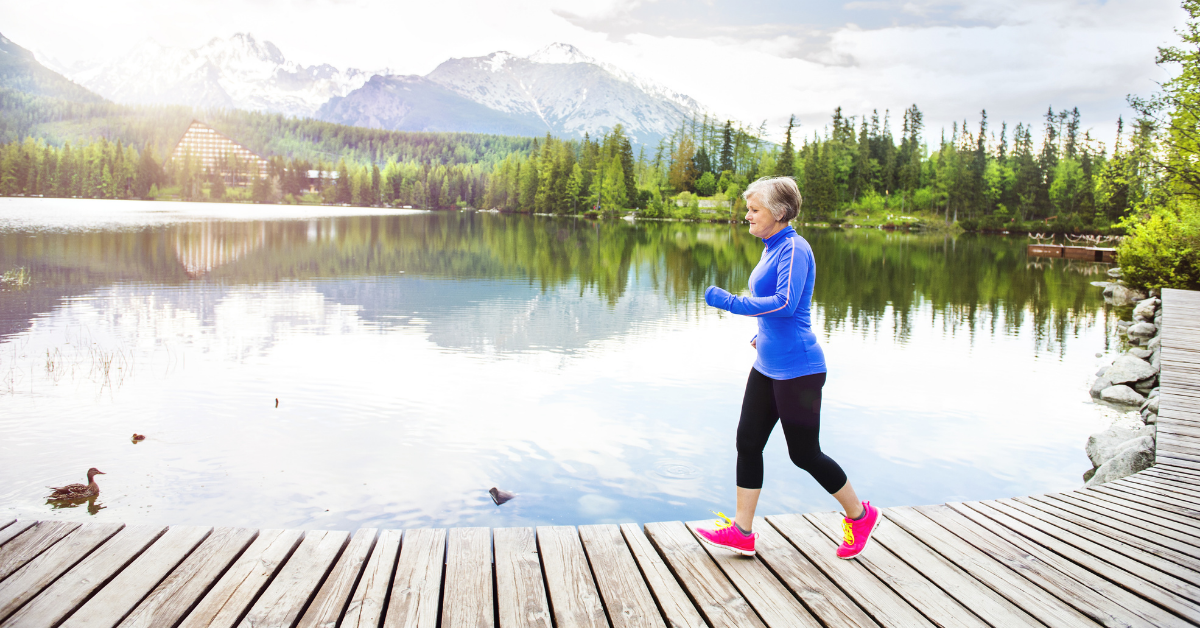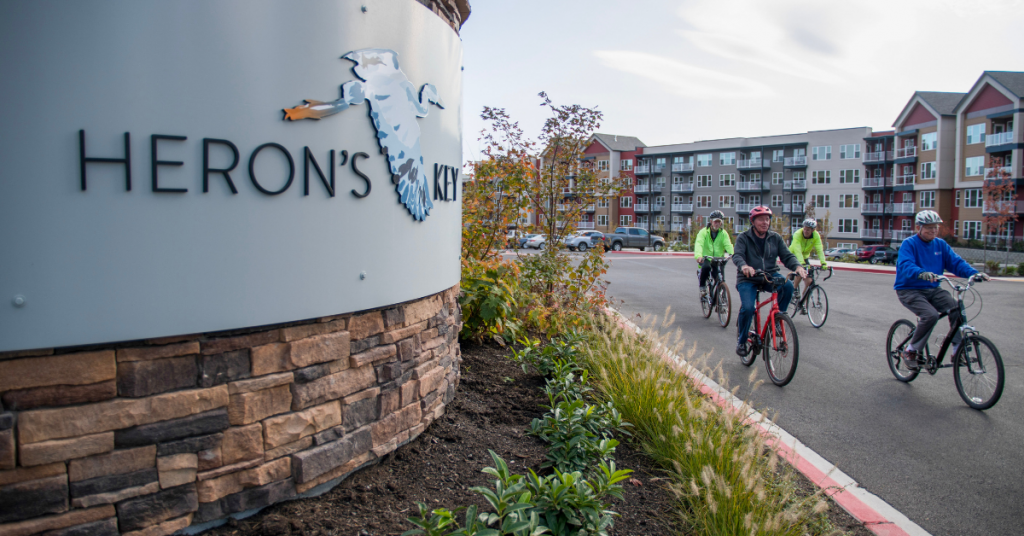It’s high season here in the Northwest, which means we may see a few more tourists around Gig Harbor than usual. You certainly can’t blame them for coming to enjoy our near-perfect weather this time of year. Those of us who live here do our best to get out and appreciate it as much as possible too. While the summer forecast is for temperatures slightly higher than average overall, you can’t really complain about daytime highs in the mid-70s. Compared with what much of the rest of the country faces in July and August, our balmy temperatures are a walk in the park. Or on the trail. Still, especially when the humidity is high, there’s a risk of experiencing heatstroke if you overdo it while you’re out. That’s true for adults of any age but even more so for older adults. If you’re curious about what exactly heatstroke is and why it becomes more of an issue as we get older, keep reading for safety tips to help you get the most out of summer!
Heatstroke Or Heat Exhaustion?
The difference between the two is a matter of degree—literally. Both conditions, along with heat stress, heat fatigue, heat syncope (fainting), heat cramps, heat edema (swelling) and heat rash, fall under the umbrella term “hyperthermia.”
Heatstroke and heat exhaustion are the most serious among them. At these stages, your body has been overwhelmed by heat and can no longer control its temperature.
With heat exhaustion, you may feel weak or dizzy. You may have a headache and difficulty concentrating or problems with your coordination. Your skin might feel cold and clammy, and your pulse may be fast and weak. You might suddenly start to perspire excessively and feel nauseated. You could vomit or faint.
Heat exhaustion can lead to—but doesn’t always precede—heatstroke.
If you have heatstroke, you may have some of the same symptoms as with heat exhaustion. But. your internal temperature will have reached at least 103 degrees, according to the Centers for Disease Control and Prevention (CDC). At that point, you could experience any number of additional symptoms, including:
- Loss of consciousness
- Confusion
- Unexplained changes in behavior
- Slurred speech
- Dry or damp red skin that is hot to the touch
- Rapid, strong pulse
- Chills
- Seizures
Without prompt treatment, heatstroke can cause permanent organ damage or be fatal.
According to the National Institutes of Health (NIH), heatstroke is a greater concern among older adults for several reasons, including:
-
Changes in the skin
As we get older, our blood circulation may become impaired and our sweat glands may not work as well.
-
Dietary changes to address health conditions
An example would be a low-sodium diet because of high blood pressure. (But that doesn’t mean you should get out the salt shaker!)
-
Medications
Certain drugs and drug combinations could make it more challenging for your body to respond properly to heat. In particular, diuretics, sedatives and tranquilizers can cause you to sweat less. So can some heart and blood pressure medications. (The NIH notes the importance of continuing to take your medications as prescribed and recommends talking with your doctor about any concerns you have.)
-
Certain diseases and illnesses
Health conditions that cause fever or general weakness can increase your risk of hyperthermia, as can diseases that affect the heart, lungs and kidneys.
-
Dehydration
While this is a risk factor for people of all ages, older adults have a greater tendency to become dehydrated.
Fortunately, with age comes wisdom, and we can use that wisdom to offset some of those age-related risk factors.
Summer Safety Tips To Help Seniors Prevent Hyperthermia
Now that we’ve been able to ease the COVID-19 restrictions at Heron’s Key (thanks to a vaccination rate of more than 97% in our community), residents are thrilled to start getting back into some of their usual summer activities—and we’re excited for them!
As they, and you, begin to resume a more active lifestyle, it’s as important as ever to match that independent spirit and joie de vivre with summer safety steps for seniors that can help prevent heat-related illness.
Nobody plans to get sick, of course, but hyperthermia can sneak up on you—even here in Gig Harbor, where the summer temperatures are mild. Your best bet for avoiding heatstroke and other conditions associated with summer heat is to heed a few common-sense suggestions:
-
Know your limits and listen to your body.
If you start feeling weak or lightheaded, take a break and cool down. On hot days when the humidity is high, consider staying inside as much as you can.
-
Stay hydrated!
When the weather warms up, it’s time to increase your intake of hydrating liquids. Alcohol, highly caffeinated “energy” drinks and sugary sodas don’t count and may actually contribute to dehydration.
-
Wear light-colored, loose-fitting clothes.
Natural fabrics that “breathe,” such as cotton, linen and bamboo, will keep you cooler than synthetic materials (e.g., polyester, nylon and rayon).
-
Plan your outside activities for cooler times of the day.
If you know you’ll be exerting yourself, plan to engage in those activities in the morning or evening if possible.
-
Keep someone else close by.
It’s always a good idea to have another person around while you’re outside, even if you’re just puttering in the garden or practicing your putt. Heading out for a nature hike? Play it safe—take your cell phone and a friend.
How To Help A Person Who Is Overtaken By The Heat
If you notice that someone around you is experiencing symptoms of heat exhaustion or heatstroke, there are steps you can take to help. The CDC advises calling 911 if the person is experiencing heatstroke, but if you’re uncertain which it is, err on the side of caution and make the call.
Then, get the person to a cooler place if you can and help them remove any excess or tight clothing. If you can do so safely, help the person get into a cool bath. Otherwise, apply cool water to their face, neck, head, back, armpits and groin area with a sponge or wet towel.
If it’s heat exhaustion, you can provide hydrating liquids (water, low-sugar juice or sports drinks) as long as the person is able to swallow, but make sure the liquids are not too cold. An ice-cold drink could cause stomach cramps and interfere with the rate of absorption.
If it’s heatstroke, the CDC advises against giving the person anything to drink.
Knowing what to do in this situation just might save someone’s life, so why not share this information with your friends and family?
The Latest COVID-19 Update At Heron’s Key
As of early June, we entered into Phase 3 of the governor’s “Healthy Washington—Roadmap to Recovery” plan. That means indoor visits in individual residences within our independent living area are allowed, and fully vaccinated visitors are not required to wear a mask or follow social distancing guidelines (though they still need to be screened and have their temperature taken upon arrival).
For the time being, attendance at indoor sponsored activities and seating capacity at Spinnakers restaurant are still limited. Although, we expect to expand those as we advance to full re-opening.
We’ve also been able to ease restrictions to some extent at Penrose Harbor. Scheduled in-person visits are now available in certain circumstances for those who are eligible based on their vaccination and COVID-19 status.
Want To See More Of Heron’s Key?
We’ll admit that summer just might be the very best time to see Heron’s Key if you’re interested in visiting us in person. Then again, ask us in October when the best time is and we’ll probably tell you it’s during the fall. Every season is special here because it’s the residents and staff who make this such a gratifying place to be.
You can see what we’re talking about if you follow us on Facebook, where we share posts and photos that capture the fun that goes on around here. Take a few minutes to scroll through our page and you’ll get a feel for what it would be like if you became part of our community.
If you want to schedule a tour, we’d love to show you around. Meanwhile, you can take a visual tour right now, or anytime, by visiting our gallery of videos and photos.
Thanks for taking the time to read our blog, and we hope to see more of you soon!


